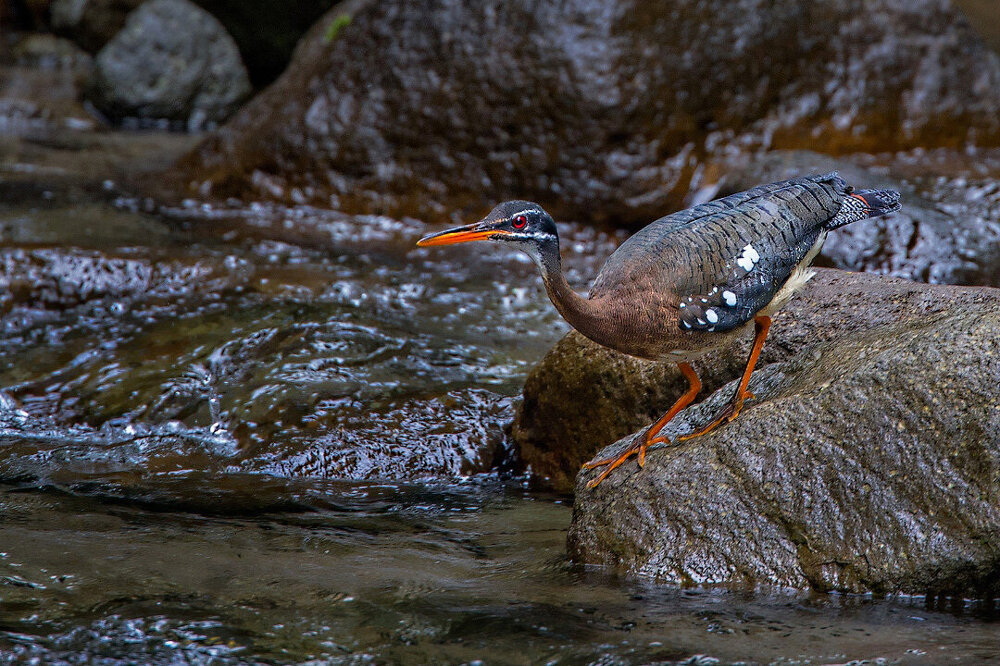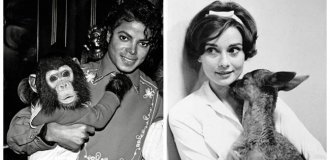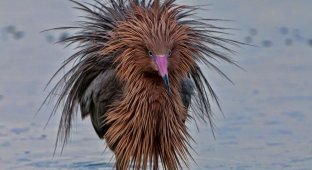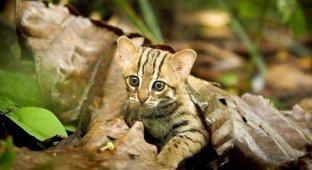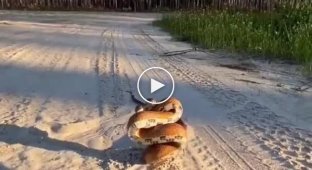How a little bird terrifies formidable predators (5 photos + 1 video)
So, meet the sun heron, or sun bittern (Eurypyga helias). Strictly speaking, this is not a heron or a bittern. I’ll tell you why below. 
Now pay attention to her unusual colors, and most importantly, her pose.
This pose is not a take-off pose, nor is it a drying of wings, since wings are usually dried by exposing the inner surface to the sun's rays. In fact, this is a protective stance of the heron and its main purpose is to demonstrate the unusual pattern on the wings.
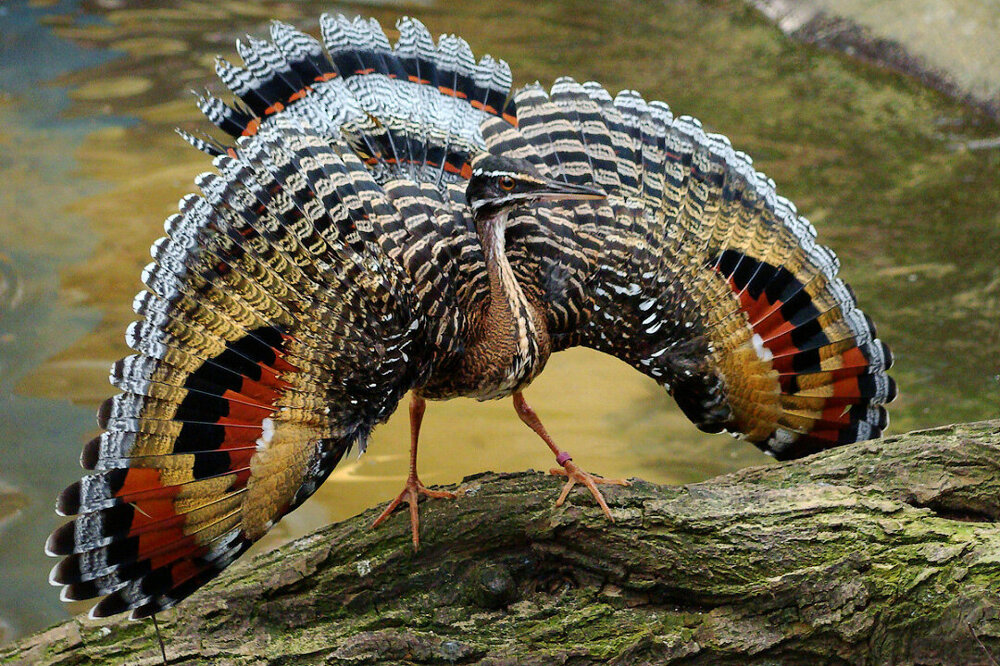
We, as people living in the world of advanced computer graphics, are unlikely to see the resemblance of eyes in this drawing, and only relics like me, who have seen pixel art and 7 KB graphics on the ZX Spectrum, will be able to recognize in this ornament on the wings an image of the external organs of vision of the type " eyes".
But it seems that in the world of the Amazonian jungle, computer graphics are also difficult, because this trick works quite well on predators. In case of danger, the heron shows the predator its stage miniature with “eyes” on its wings, and while the adversary realizes what a wonderful and wondrous miracle this is, the eyes suddenly fly off into the sunset.
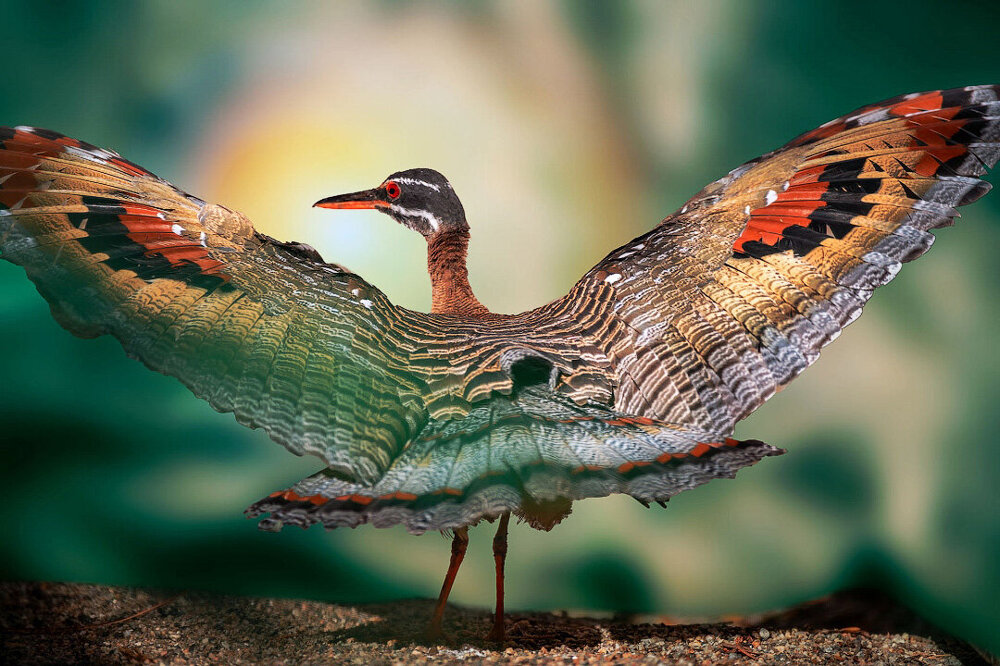
Such protective mechanisms exist not only in birds; just remember the butterflies of the daytime peacock eye or the pear peacock eye. But this is not the only feature of the sun heron.
The thing is that this is not exactly a heron or a bittern, although these are the words that appear in the name. It looks like a heron in appearance, but is not related to the heron. Herons belong to the pelican order, and our heroines form their own separate order, eurypygiformes.
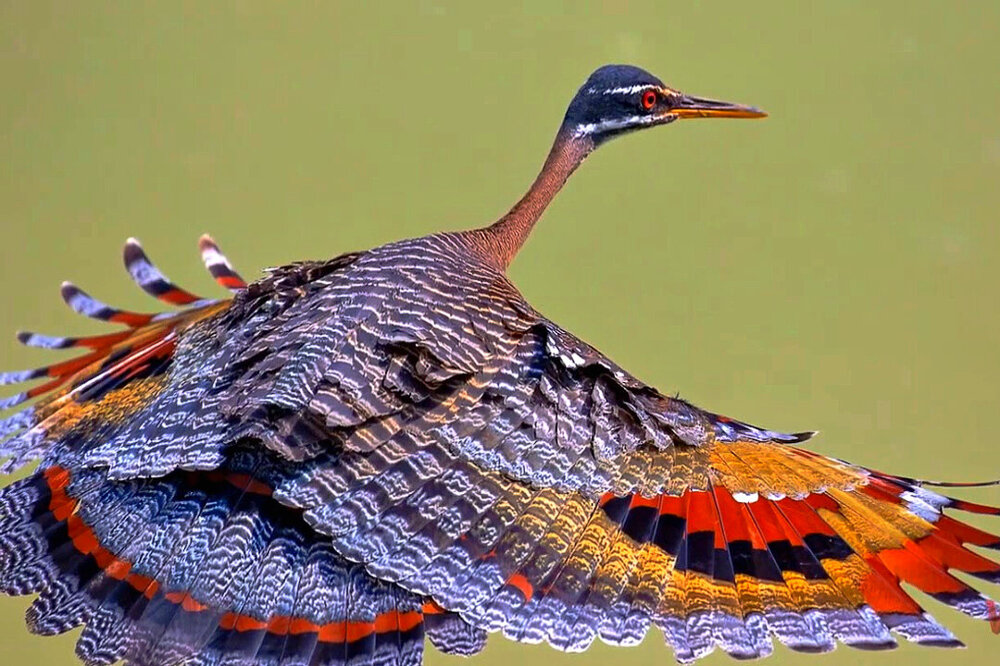
It is noteworthy that in a number of anatomical and morphological properties they are closer not to herons, but to cranes, but they are not closely related to cranes either. The only close genetic relative of the sun heron is the mysterious Kagu bird, which lives on the other side of the globe in New Caledonia, and the similarity with herons is due to convergent evolution, that is, a similar way of life.
The genetic relationship with the Kagu seems to indicate that we are dealing with an ancient order of birds that existed back in those immemorial times, when the supercontinent Gondwana had not yet split into fragments drifting in different directions...
